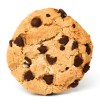Journal reference: Taylor JA, Webber W, Standish L, Quinn H, Goesling J, McGann M, Calabrese C. Efficacy and safety of echinacea in treating upper respiratory tract infections in children: a randomized controlled trial. JAMA 2003; 290(21): 2824-2830
Link: http://dx.doi.org/10.1001/jama.290.21.2824
Published: 3 December 2003
 Evidence cookie says… |
Echinacea does not appear to be an effective treatment for the common cold in children.
Side-effects (such as rash and allergic reactions) can occur and the UK regulatory body (MHRA) recommends against its use in children under 12 years. |
Clinical scenario
I recently saw Abby, a 7-year-old girl with a cold who had been brought in by her mother. Mum mentioned that she used Echinacea products, and asked whether Abby would also benefit from them.
Clinical question
What is the effect of Echinacea on the duration or severity of the common cold in children?
What does the research evidence say?
Step 1: The Cochrane Library
The Cochrane Library contains a recent systematic review and meta-analysis (up-to-date June 2013) that examines Echinacea for preventing and treating the common cold, though this analysis was mostly in adults. [1] The review does identify a single randomised trial in children published in JAMA. [2]
Step 2: The Trip Database
A PICO search using the TripDatabase (search term: P: “children”, I: “echinacea”, C: “placebo”, O: “common cold”) reveals a “BestBETs” evidence-based appraisal that includes the same study. [3] I could not identify any better studies using PubMed – so let’s look at Taylor et al. (2003) in detail.
Critical appraisal
I will use the randomised controlled trial appraisal sheet from the Centre for Evidence Based Medicine. [4]
PICO
Participants: who was studied?
524 well American children aged 2 to 11 years, recruited from a paediatric practice-based research group in Seattle, or from Bastyr University, an alternative medicine institution in Washington State; during the autumn to spring months of 2000-2002. The mean age was 5.5 years, there was an even mix of boys and girls, and about three-quarters had siblings. Important exclusions were a history of respiratory disease (e.g., asthma), or receiving chronic medications of any kind.
Intervention: what was the exposure?
Dried pressed E. purpurea juice of the above-ground herb harvested at flowering, combined with syrup. Children aged 2-5 years received 7.5 mL/day, and those aged 6-11 years received 10 mL/d (50% and 67% of the manufacturer’s recommended adult dose respectively). This was commenced at the onset of an URTI until resolution of symptoms, for up to a maximum of 10 days.
Comparator: what was the control/alternative?
The syrup without the Echinacea extract was used as the placebo. The investigators claim that it looked identical to the intervention syrup, with a similar taste and smell.
Outcomes: what was measured?
Primary outcome: duration and severity of URTI – as measured by standardised parental observations in a logbook.
Internal validity: are the trial results valid?
Randomised patient assignment?
Yes.
Groups similar at the start?
Yes. The groups were similar (Table 1, p. 2827). [2]
Groups treated equally apart from assigned treatment?
All patients accounted for?
Yes. Dropout rates were low.
Measures objective? Or patients and clinicians kept blinded?
Yes. The study was double-blinded and parents did not appear to know whether their child received the intervention or placebo syrup (p. 2829). [2]
What were the results?
Primary outcome: there were almost no difference between the two groups for duration and severity of URTI symptoms.
Other outcomes: the Echinacea group suffered from more rashes compared to the placebo group (7.1% vs 2.7%, P = 0.008). The Echinacea group suffered from more adverse events generally, though this wasn’t a statistically significant.
Conclusion
This older randomised trial was well conducted and provides good evidence that this particular formulation of Echinacea is not effective as a treatment for the common cold in children. However, there are major differences in products labelled as Echinacea so this study cannot be definitive. The results, however, are consistent with the Cochrane review of mostly adult participants. [1] Taken together, there is little evidence that Echinacea is beneficial as a treatment for colds.
It is interesting that this study quite clearly demonstrated more rashes as a side-effect in those children in the intervention arm. Echinacea is thought to cause allergic reactions in some children and the UK regulatory body advises against its use in children less than 12 years of age. [5]
I discussed with mum that the best available evidence doesn’t support the use of Echinacea in children with the common cold like Abby, and that the risk of side-effects like allergy is a concern.
Stat Facts
Single-, double-, and triple-blinding
Blinding procedures reduces the likelihood of bias in study results. Single: the participants are blinded. Double: both participants and researchers are blinded. Triple: participants, researchers, and monitoring committee (e.g., for patient safety) are blinded.
References
- Karsch-Völk M, Barrett B, Kiefer D, Bauer R, Ardjomand-Woelkart K, Linde K. Echinacea for preventing and treating the common cold. Cochrane Database of Systematic Reviews 2014, Issue 2. Art. No.: CD000530. DOI: 10.1002/14651858.CD000530.pub3.
- Taylor JA, Webber W, Standish L, Quinn H, Goesling J, McGann M, Calabrese C. Efficacy and safety of echinacea in treating upper respiratory tract infections in children: a randomized controlled trial. JAMA 2003; 290(21): 2824-2830
- Koenig K, Roehr CC. Does treatment with Echinacea purpurea effectively shorten the course of upper respiratory tract infections in children [website]? BestBETs. Last updated: 2006 May 24 (Retrieved: 2014 May 30). http://www.bestbets.org/bets/bet.php?id=01172
- RCT Appraisal Sheets. Centre for Evidence Based Medicine [website]. Retrieved on 2014 May 30. http://www.cebm.net/index.aspx?o=1097
- Parents and carers are advised not to give oral products containing Echinacea to children under 12 years [website]. Medicines and Healthcare Products Regulatory Agency (MHRA), London. Last updated: 2012 Aug 20 (Retrieved: 2014 May 30). http://www.mhra.gov.uk/Safetyinformation/…

Recent Comments